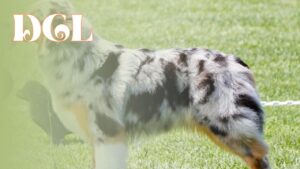Hey there! So, you might be wondering about the ongoing debate surrounding Australian Shepherds and their tails. Well, I’m here to shed some light on the topic of docked tails versus undocked tails. As an Australian Shepherd enthusiast myself, I’ve delved into the history, pros, and cons of this practice.
In this article, we’ll explore the origins of tail docking in Australian Shepherds and the reasons behind it. We’ll also discuss the arguments for and against docking, as well as the growing trend toward leaving tails undocked. It’s an important decision that every Australian Shepherd owner should consider carefully, taking into account the welfare and functionality of their furry companion.
So, if you’re curious about the various perspectives and future trends in Australian Shepherd tail docking, stick around! Let’s dive into this fascinating discussion together.
History of Tail Docking in Australian Shepherds
You may be surprised to learn that the history of tail docking in Australian Shepherds will make you question the humanity behind this practice.
The Australian Shepherd, despite its name, is not actually from Australia. It was developed in the United States during the 19th century. The breed was originally used for herding livestock, particularly sheep.
Tail docking, the practice of removing a portion of the tail, was believed to prevent injuries while working on the ranch. However, as time went on, it became more of a cosmetic procedure than a necessity.
The decision to dock a dog’s tail is a controversial one. Many argue that it is unnecessary and inhumane, as it involves removing a part of the dog’s body without any medical benefit. In fact, tail docking is illegal in many countries, including Australia and the United Kingdom. These countries believe that dogs should not be subjected to unnecessary procedures for cosmetic purposes.
Fortunately, the practice of tail docking in Australian Shepherds is becoming less common. The breed standard for Australian Shepherds now allows for both docked and undocked tails, giving owners the option to choose what they prefer. This change reflects a growing awareness and concern for the well-being of these beautiful dogs.

Pros of Docked Tails in Australian Shepherds
Imagine having a playful and active furry companion with a tail that perfectly matches their energetic personality. That’s one of the benefits of docking the tails of Australian Shepherds. While some may argue against tail docking for ethical reasons, there are several advantages to consider.
Firstly, docking the tail of an Australian Shepherd can help prevent injuries. These dogs are known for their agility and love for outdoor activities, and their long, whip-like tails can easily get caught on objects or be accidentally stepped on. By docking their tails, the risk of tail injuries is significantly reduced.
Secondly, docking the tail can enhance the overall appearance of the Australian Shepherd. The breed standard for Australian Shepherds often includes a docked tail, and it is believed that this contributes to their distinctive and balanced appearance.
Lastly, docking the tail can make grooming easier for both the dog and the owner. Australian Shepherds have thick and often long fur, and their tails can become easily tangled or matted. With a docked tail, grooming becomes more manageable and less time-consuming.
To provide a visual representation of the pros of docking the tail of an Australian Shepherd, here is a table comparing the benefits:
| Pros of Docked Tails in Australian Shepherds |
|---|
| Prevention of tail injuries |
| Enhanced appearance |
| Easier grooming |
In conclusion, docking the tail of an Australian Shepherd can offer various advantages, including the prevention of injuries, improved appearance, and easier grooming. While it is important to consider ethical concerns, these benefits should also be taken into account when making a decision about tail docking.
Cons of Docked Tails in Australian Shepherds
I have some concerns about the practice of docking tails in Australian Shepherds. One of the main ethical concerns is the painful procedure that puppies have to go through. It seems unfair to subject them to unnecessary pain for purely cosmetic reasons.
Additionally, docking their tails can potentially have negative effects on their communication and balance. Tails play a crucial role in expressing emotions and maintaining balance, so removing them could hinder their ability to communicate and move properly.
Ethical Concerns and Painful Procedure
Docking the tail of an Australian Shepherd raises ethical concerns due to the painful procedure involved. The process involves amputating a portion of the tail, which can cause significant pain and distress to the dog. This raises questions about the necessity and morality of subjecting these loyal companions to such a procedure.
- The procedure is typically performed without anesthesia, causing unnecessary suffering.
- Docking the tail can disrupt the dog’s natural communication and expression, hindering their ability to communicate effectively with other dogs and humans.
- It is a permanent alteration that cannot be reversed, depriving the dog of their natural tail and the functions it serves, such as balance and communication.
- Docking the tail for purely cosmetic reasons perpetuates the idea that a certain appearance is more important than the well-being and happiness of the dog.
In conclusion, the ethical concerns surrounding the painful procedure of docking an Australian Shepherd’s tail highlight the need for a more compassionate approach to the well-being of our canine companions.
Potential Negative Effects on Communication and Balance
Amputating a dog’s tail can disrupt its natural communication and balance, potentially hindering its ability to interact effectively with both other dogs and humans.
The tail serves as an important means of communication for dogs, allowing them to express emotions and intentions. Without a tail, dogs may struggle to convey their emotions accurately, leading to misunderstandings and conflicts with other dogs.
Additionally, the tail plays a crucial role in the dog’s balance, especially during activities such as running and jumping. Removing the tail can throw off their equilibrium, making it harder for them to navigate their surroundings with ease.
This loss of balance can not only affect their physical abilities but also their confidence and overall well-being. Therefore, it is essential to consider the potential negative effects on communication and balance before deciding to dock an Australian Shepherd’s tail.
Arguments for Undocked Tails in Australian Shepherds
Imagine the natural beauty and grace of an Australian Shepherd with its tail intact, wagging happily as it herds sheep or plays fetch, adding an extra element of charm to this already captivating breed.
One of the arguments for undocked tails in Australian Shepherds is that it allows for better communication. The tail is an essential tool for dogs to express their emotions. It serves as a visual signal that can convey happiness, excitement, fear, or even aggression. By keeping their tails undocked, Australian Shepherds can communicate more effectively with other dogs and humans, leading to better social interactions and understanding.
Another argument for undocked tails is that it promotes better balance. The tail acts as a counterbalance for dogs, especially when they are running or making sharp turns. It helps them maintain stability and coordination. By removing their tails, Australian Shepherds lose this natural advantage and may be more prone to accidents or injuries. Keeping their tails intact allows them to maneuver with precision and agility, enhancing their performance in various sports and activities.
Furthermore, undocked tails also contribute to the overall well-being of Australian Shepherds. Tails play a crucial role in the dog’s body language and communication with other animals. By preserving their natural tail, Australian Shepherds can communicate their intentions and emotions more accurately, leading to better social interactions and reducing the likelihood of misunderstandings or conflicts.
In conclusion, arguments for undocked tails in Australian Shepherds revolve around better communication, improved balance, and enhanced overall well-being. By allowing these dogs to keep their tails intact, we can appreciate their natural beauty and grace while also promoting their physical and emotional health.

Considerations and Future Trends in Australian Shepherd Tail Docking
Consider the evolving perspectives and potential advancements in the practice of tail modification for Australian Shepherds. As society becomes more aware of the ethical implications of docking tails, there are several considerations and future trends that are emerging in this area.
- Increased focus on natural tails: Many organizations and individuals are advocating for the preservation of a dog’s natural tail, arguing that it is an important communication tool and should not be removed without a compelling reason.
- Alternative tail modification methods: Some breeders and veterinarians are exploring alternatives to traditional tail docking, such as partial docking or cosmetic procedures that preserve the tail’s functionality while still meeting breed standards.
- Education and awareness: There is a growing push for education and awareness about tail docking, informing owners and breeders about the potential negative consequences and alternatives available.
As the debate around tail docking continues, it is important to consider these evolving perspectives and potential advancements. By prioritizing a dog’s well-being and considering alternatives, we can ensure the future of Australian Shepherds and their tails is one that respects their natural form and function.
Frequently Asked Questions
Are Australian Shepherds born with docked tails or is it a procedure that is done after birth?
Australian Shepherds are not born with docked tails. It is a procedure done after birth. Some breeders choose to dock the tails for aesthetic or working purposes, but it is a controversial practice.
How does tail docking affect the overall health and well-being of Australian Shepherds?
Tail docking can have negative impacts on the overall health and well-being of Australian Shepherds. It can cause pain, and infection, and affect their balance and communication. It’s important to consider the welfare of the dog before opting for this procedure.
Are there any alternatives to tail docking that can achieve similar results?
There are alternatives to tail docking that can achieve similar results. These include selective breeding for naturally shorter tails, as well as cosmetic procedures such as tail docking bands that mimic the appearance of a docked tail.
Does the length of the tail impact the dog’s ability to communicate through body language?
Yes, the length of a dog’s tail does impact its ability to communicate through body language. A longer tail allows for more expressive movements and signals, while a docked tail limits the range of communication.
What are the legal regulations surrounding tail docking in Australian Shepherds in different countries?
The legal regulations surrounding tail docking in Australian Shepherds vary across different countries. Some countries have banned the practice completely, while others may allow it for specific purposes, such as working dogs or certain breeds.
Conclusion
In conclusion, after examining the history, pros, cons, and arguments for both docked and undocked tails in Australian Shepherds, it is clear that there is no definitive answer.
Tail docking is a controversial topic, and opinions vary greatly among owners and breeders. Ultimately, the decision to dock or not to dock a dog’s tail should be made based on careful consideration of the dog’s health, well-being, and breed standards.
As trends shift toward more natural and ethical practices, it is possible that tail docking may become less common in Australian Shepherds in the future.


